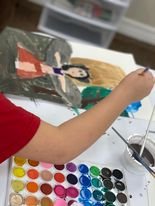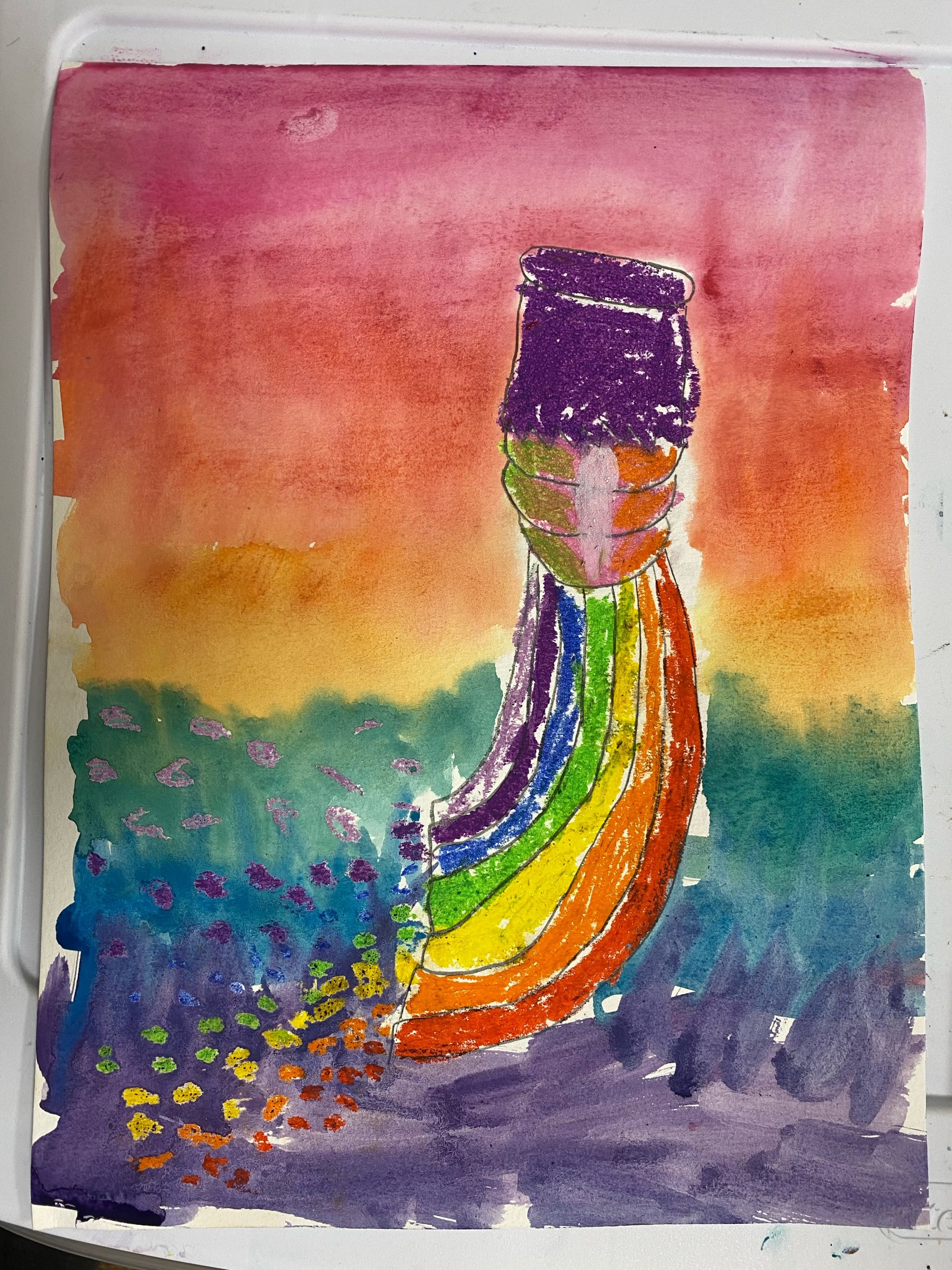
IMPORTANT NOTE! The first 30 minutes offers drawing warm up activities, so please understand that we are absolutely okay with students coming in between 4-4:30pm. The main activity for each class begins at 4:30pm.
Art Classes for Youth
Tuesdays 4-6pm Ages 5yrs-11yrs
Is your child ready for an older class?…..Tween Creative Crew: Tuesdays After-school program with Sandra (ages 8-12yrs)
YOUTH ART STUDIO@ LAC
Youth Art Classes
Explore the meaning within our Art Making: Creating art with meaning and story. Each student can choose to work with their choice of medium(watercolor, acrylic, oil pastel , pen, marker or pencil). Students learn from skilled teaching artists in a beautiful studio designed for young artists.
This class engages the imagination by encouraging young artists to think about their art in unique ways.
Students exploring basic skills in drawing and painting mediums.
Fun, relaxing and motivating for young artists.
Students learn how to encourage and support each other in the creative process.
What will students be doing in these classes?
This isn’t the standard “cookie cutter” painting class where everyone paints the same painting and each class feels the same…..we encourage individualism and innovation with creative ideas.
Each week students will:
Have opportunities to explore new technique with drawing, painting, clay, jewelry or mixed media.
Develop fresh ideas and meaning within the art they create.
Share they process, story and ideas with art friends and their creative mentors.
Learn ways to use art as a way of expressing how they feel by offering opportunities to focus on process over product.
REQUIREMENTS TO REGISTER FOR YOUTH CLASSES:
Must be about to work independently for more than 60 minutes.
Must be at least 5-6 years old.
Must be interested in learning new art approaches.
Must be able to stay the full session without parent or guardian present.
Please read our policy page before registering
〰️
Please read our policy page before registering 〰️
The benefits of art classes during early childhood…
“….Art is a natural activity to support this free play in children. The freedom to manipulate different materials in an organic and unstructured way allows for exploration and experimentation. These artistic endeavors and self-directed explorations are not only fun, but educational as well. Art allows youth to practice a wide range of skills that are useful not only for life, but also for learning.” Kylie Rymanowicz, Michigan State University Extension - January 22, 2015. READ MORE
Want to support your child’s artistic journey? Here are a few tips from Michigan State University Extension:
Talk with your child about their work. It’s often hard to decipher a child’s drawings, even though the child knows exactly what it is. When we ask, “What is it?” we are saying that it should look like something we’d recognize. Instead, ask open-ended questions like “Tell me about your picture.” You can also describe specific things your child is doing by saying things such as, “You’re making short lines, I see you are using red, green and blue.” You can also describe the actions your child is taking or the materials they are using by saying things such as, “You are using a soft paintbrush, I noticed you are making small circles, you are using two crayons at the same time!”
Imitate your child. Instead of drawing your own picture, sit down with your child and imitate their actions. Make big scribbles, small lines or practice drawing circles. If your child is focused on what you are drawing or how “good” your picture is, they are less likely to be imaginative and creative on their own.
Provide choices. Gather a wide range of materials for your child to use like paint, colored pencils, chalk, play dough, markers, crayons, oil pastels, scissors and stamps. Mix it up by bringing in unexpected materials like Q-tips, dinosaurs, dry pasta or beans.
Support, don’t lead. Have you ever noticed that activities become much less fun when they are dictated by someone else? The same goes for kids—let them decide what materials they want to use and how and when to use them. Maybe they want to peel the paper off a crayon and use it lengthwise on the paper, instead of writing with the tip.
Keep it open-ended. Instead of sitting down with a specific plan or outcome in mind, let your child explore, experiment and use their imaginations. They might make a big mess or change their mind several times—this is all part of the creative process.
Focus on the process, not the product. Encouraging your child in the action of unstructured art helps them work with intrinsic motivation. It teaches them to express themselves freely, without worrying about what others think. If a lot of attention is given to the final product or we spend a lot of energy praising the end result, a child may be more likely to do things to get your approval instead of doing what they want to do. Part of focusing on the process involves encouraging effort; exploration and effort are more important than the end product. Notice their hard work!
Let it go. As long as a child is safe (i.e., not running with scissors), let them explore. They may spend the majority of the time sharpening colored pencils instead of actually drawing with them. Children learn through playing, exploring and trial and error. When we give them freedom to discover, they are learning to create and experiment in new and innovative ways.
Get your child creating and learning—all you’ll need is a paintbrush and an open mind.
Explore more about the benefits of making art on our EVIDENCE BASED PAGE



















